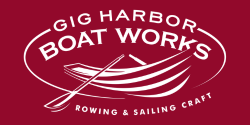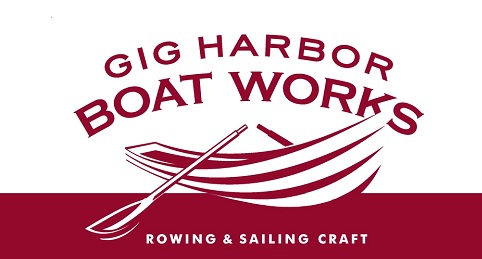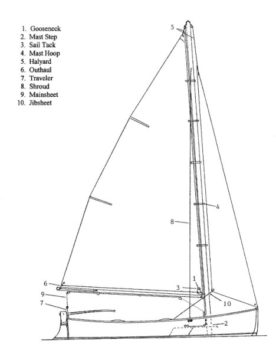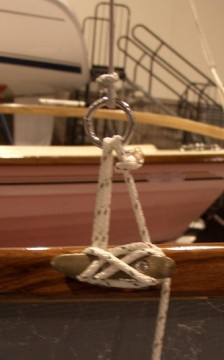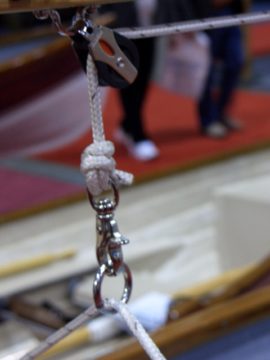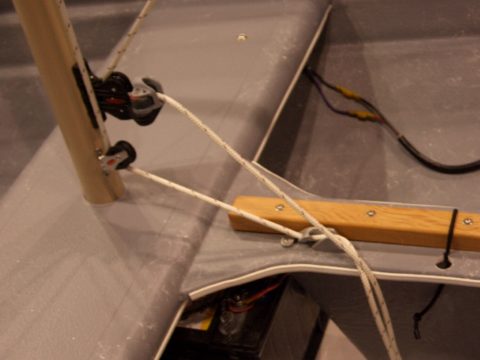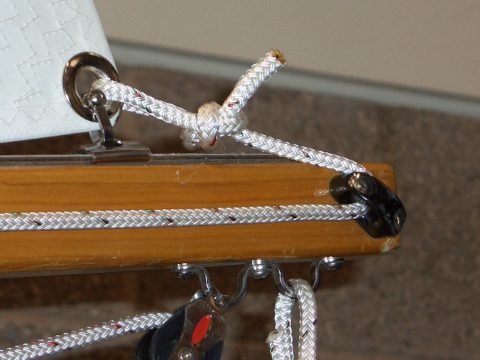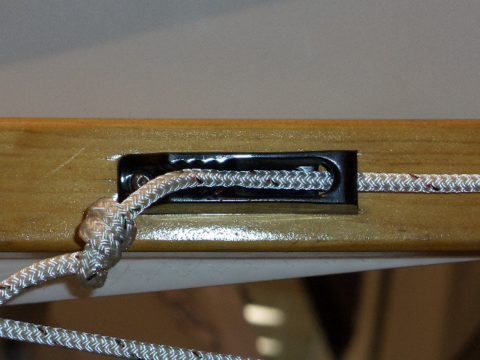Assembling the rigging of our boats has been made as basic and efficient as possible. Below you can find a video tutorial of how to rig our sloop-style sailboats. These instructions pertain to all of our sloop rigged boat models, including the 17′ Jersey Skiff, 15′ Lobster Boat, 14′ Whitehall and 12′ Point Defiance, as well as the 10′ Navigator and 9.5′ Captain’s Gig when equipped with their High Performance Option that adds the jib and bowsprit. Our cat-rigged boats including the standard 10′ Navigator, 9.5′ Captain’s Gig, and 8′ Nisqually sailboats also follow these same instructions, but since they have only a mainsail you simply skip the steps pertaining to the jib.
For our balanced lug rigged skiffs (16′ Melonseed, 17′ Salish Voyager, and 12′ Scamp, see rigging Instructions HERE.
Written instructions are below. The sequence corresponds to the video above, and we’ve added time markers so you can find the visual reference for each step.
|
Here is a diagram of the rigging. Click the image for a larger view.
|
1) Assemble the mast (video time 0:40) Slide the bottom section of the mast into the top section. Make sure the joint is clean! 2) Attach the lines (1:25) Attach lines and the wind vane to mast. The shrouds hook in one on each side, the jib halyard (if applicable) in the front. 3) Step the mast (2:45) Stand the mast up and slide it into the mast step.
|
